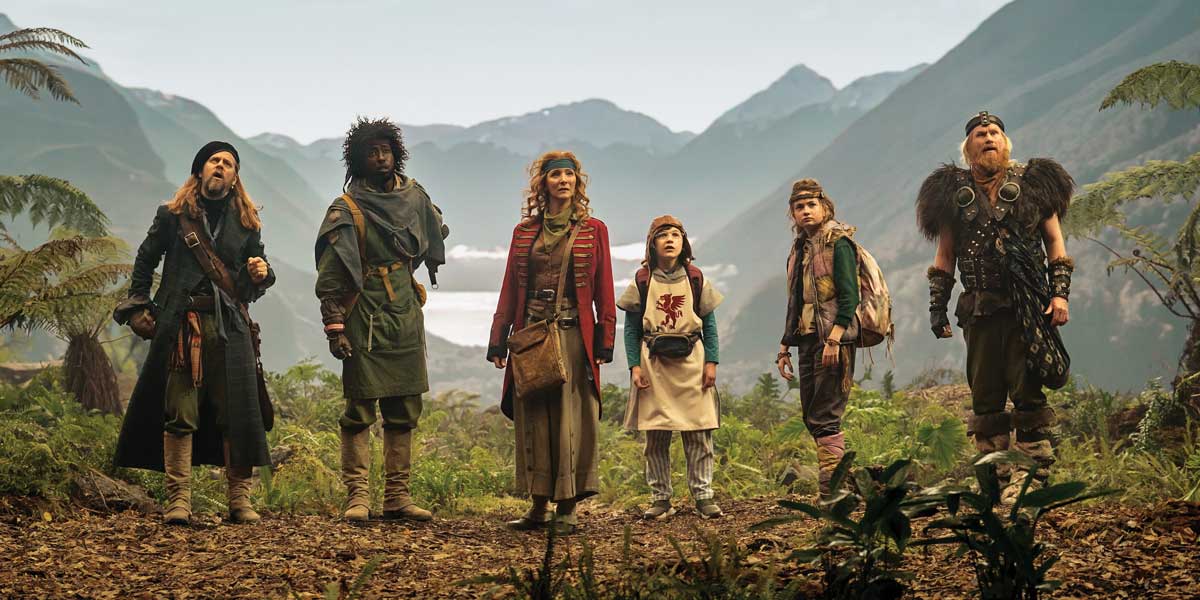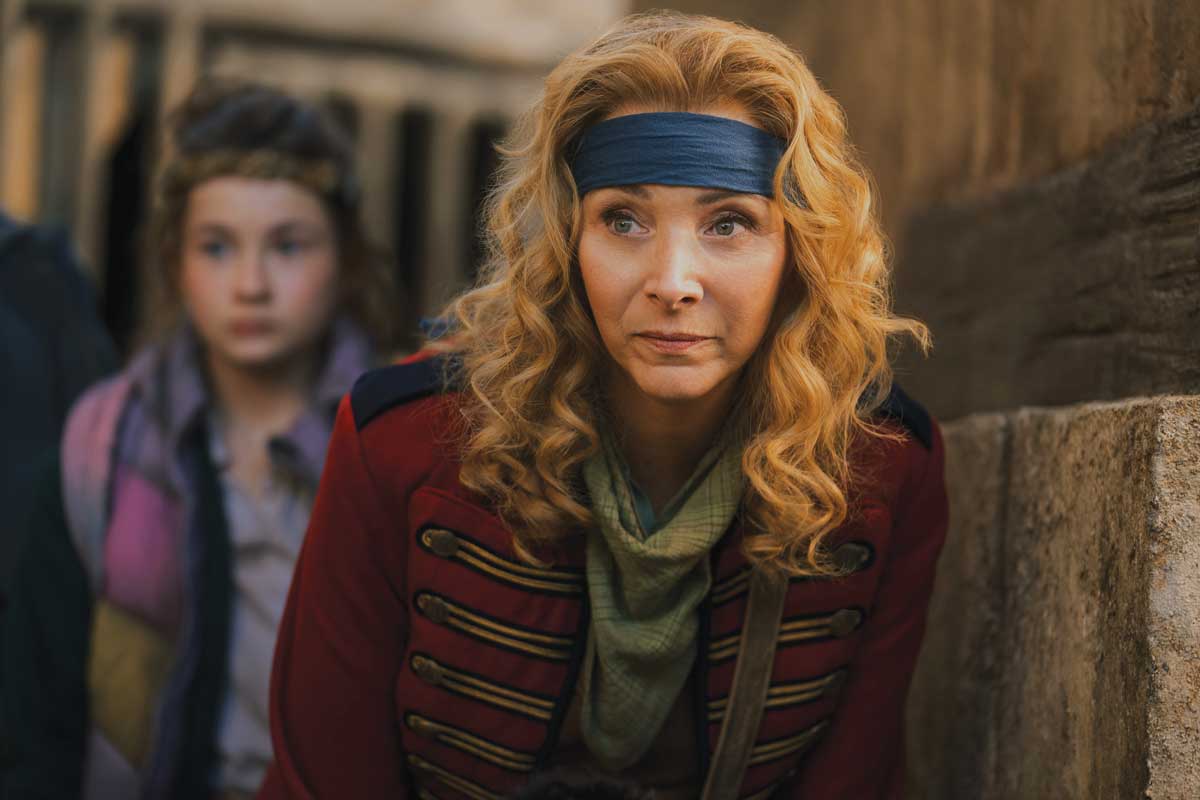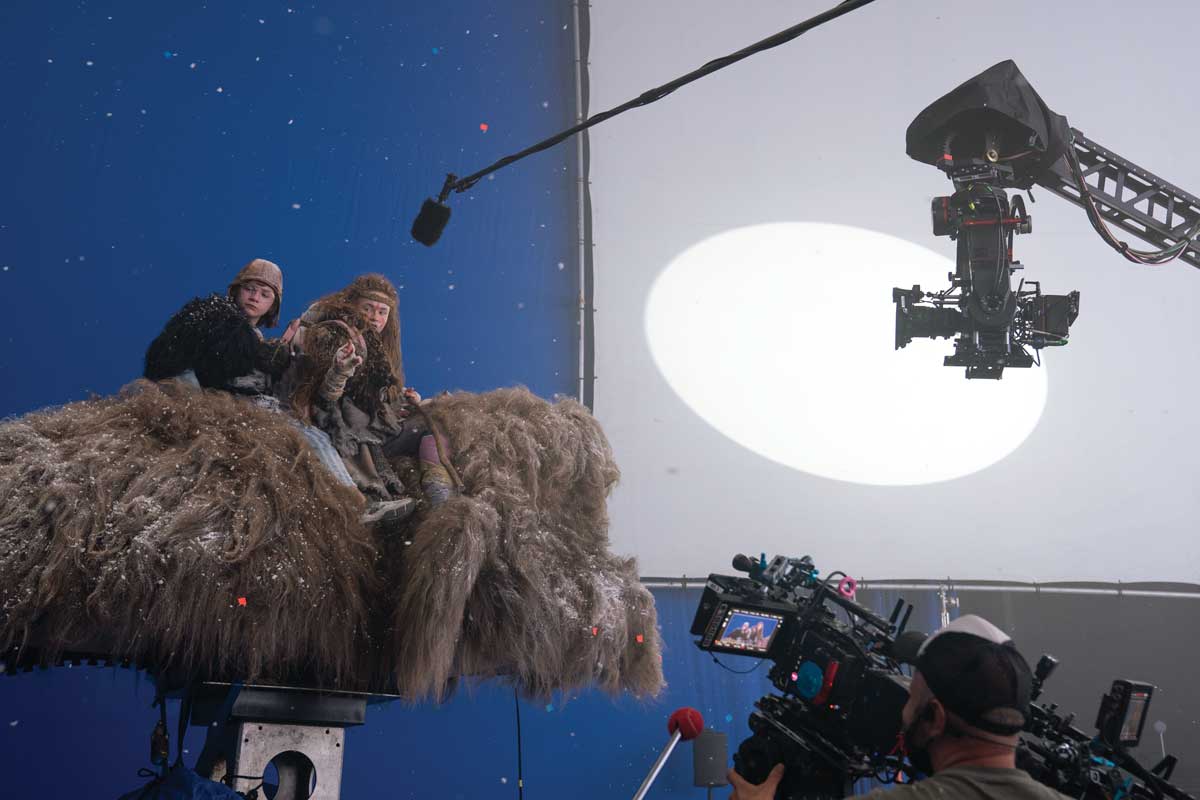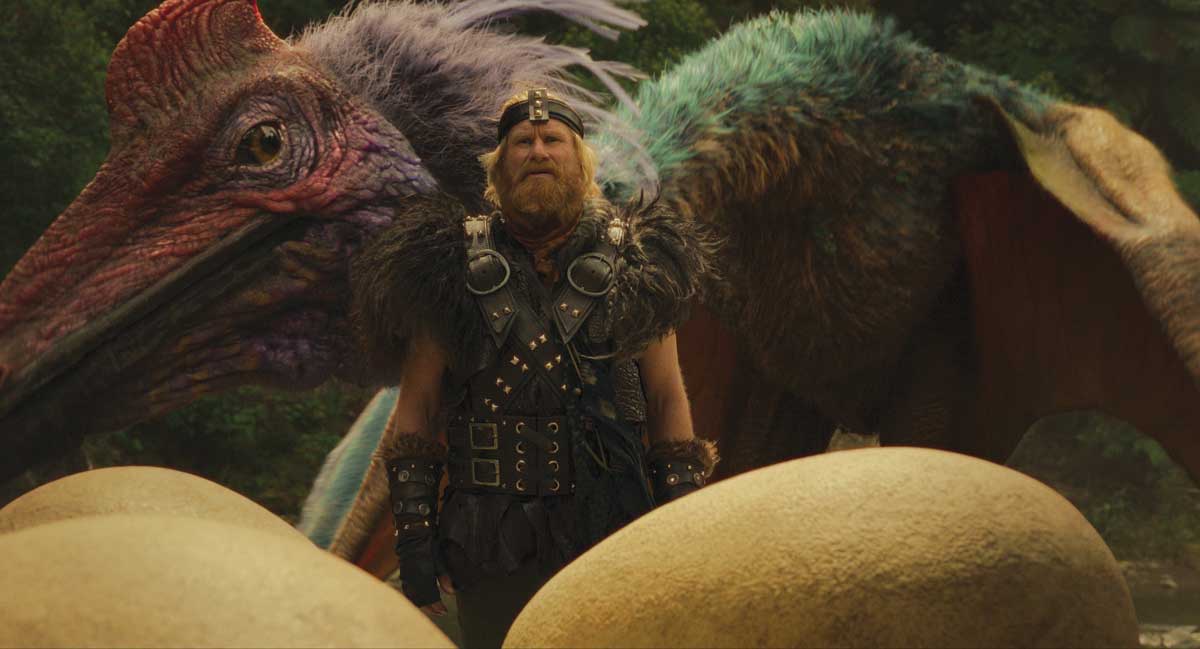
Across the universe: Time Bandits
Posted on Oct 29, 2024
Taika Waititi’s Time Bandits remake is a lesson in teamwork. We speak to the VP and VFX supervisors who crafted the series’ eccentric and often ancient environments
Words Katie Kasperson, Images Apple TV+
Based on the original British fantasy film but expanded into a ten-episode series for Apple TV+, Time Bandits – directed by Taika Waititi, who also stars as the Supreme Being – was no mean feat to make. Though shot entirely in New Zealand, the characters travel through space and time, from an ancient Mayan village to twenties Harlem to the Ice Age – woolly mammoths and all. A would-be nightmarish venture for a location scout, the production’s success ultimately boiled down to its collaborative nature, with the VFX and art departments teaming up to blend virtual backdrops with practical builds.
A bit of both
In the beginning, VFX created the heavens and the earth. “How do we do this?” asks Tobias Wolters, VFX supervisor. “We had three months to shoot; it was a crazy undertaking. Every episode spans multiple timelines and worlds, all of which needed to be designed. Given the schedule, we needed to come up with a solution – that solution was the volume and virtual production.”
Typically confined to post-production – “which is a problem because it delays decisions,” admits Wolters – the VFX team came in much earlier on Time Bandits, creating previsualisations and storyboards, “sometimes even [for] the non-VFX scenes,” he adds. With creative decisions solidified as early as possible, the showrunners could focus on the drama rather than how to execute complex scenes mid-shoot. “We should be thinking about the final result and planning for it well,” Wolters argues. “If we’re there from day one and can influence the production and decisions from the start, that usually allows for a smoother process.”
Headed by Dimension Studio’s James Dinsdale and John Allardice (both acting as VP supervisors), Time Bandits’ VP team dovetailed with VFX. “If you use VP, it’s not just about putting content on a screen; you’re pretty much creating another production entity,” claims Wolters. In this case, VP and VFX worked in tandem, creating LED backdrops which were part virtual and part real.
“We wanted to embrace the handcrafted feel,” Wolters recalls, in part to pay homage to the original 1981 film. “How can we mix the old-school techniques with the new? How can we use miniatures? How can we use an oil painting?” he asks. To create believable backgrounds, like the Mayan temples in episode 2, the art department built miniatures, which the VFX team then took outside, bathed in sunlight and scanned the captured result into Unreal Engine. “You get that perfect amalgamation of handcrafted and cutting-edge technology,” states Wolters.
Besides miniatures, the crew created ‘world bibles’ – “a library of design choices and backgrounds we could use to create digital extensions based on something real,” explains Wolters. “For instance, for the Ice Age, we flew to the South Island – myself, the DOP and a little team – to pre-shoot a lot of the backgrounds and capture as many places as possible.” This ultimately lent credibility to the VP-based sequences, as the LED backdrops generally combined a real location with virtual touch-ups.
“VP and the VFX department was all working together and closely interlinked – and that’s exactly how it should be,” describes Wolters.
Cold as ice
Once they had the backdrops in place, the VP, VFX and art departments worked closely, ensuring that any foreground items looked organically integrated. Working out of the K Stage at Stone Street Studios – the largest sound stage, where King Kong was shot – the Time Bandits team travelled to 1900s New York City, medieval England, a desert, an island and the Ice Age. Wolters noted that the latter was ‘the most exciting and rewarding challenge’.
About half of episode 7 was filmed on the LED volume, combining a highly contrasted, unsaturated environment with weather elements such as fake snow. It took ‘days and days’ to find the right material – not only so it looks natural, but also so it would match the virtual backdrop in colour, consistency and glimmer. More importantly, they needed snow that wouldn’t corrode
the LED panels, which are not always all-weather resistant.
Although VP’s capabilities are impressive, not everything can be shot in camera. For instance, the characters interact with a woolly mammoth, which was digitally enhanced in post. Between the fake snow, photographed backdrops, CG mammoth and meticulous lighting, the Ice Age episode succeeds visually, allowing the viewer to focus more on the story.
That said, the VP team aimed to “get as much in camera as possible,” shares Dinsdale. When watching the finished series, “we can see that many shots are very much what we filmed, which is lovely. The VFX team did a spectacular job on this show as well. It looks beautiful all the way through,” he remarks.
Allardice echoes this sentiment, noting the blurring between VP and more traditional VFX. “I looked through some of the first few episodes and thought ‘wait a minute, is that us?’” he recalls. “Of the material we shot virtually, around 70 to 80% was never even touched in post-production afterwards, apart from colour correction – it lived exactly as we shot it on stage.”
One fluid motion
According to Allardice and Wolters, Waititi and showrunners Jemaine Clement and Iain Morris bring a fluid approach to production, changing the script or making other adjustments fairly late in the schedule. “They need a lot of flexibility as well as that spontaneity. They want the improv, which is usually a bit tricky with something like VP,” Wolters suggests, as this requires a joint effort between almost every department. That said, it simplifies location changes, saving costs in this area.
“In the Harlem episode,” begins Dinsdale, “there’s a dock scene where they are down by the river which was originally built as a rooftop in the middle of the city over three or four weeks. Then – I can’t remember how far out from the shoot, but it wasn’t too far – the entire script changed to being a dock scene.” This forced the Unreal Engine artists back to the drawing board. “They turned on a dime and made something impressive in an impossible amount of time,” admires Dinsdale. “Everyone came together; it was like some sort of magic.”
As the show’s creators saw how well VP was working, their enthusiasm led to increased demands. “It was very reactive,” highlights Allardice. “We definitely ended up doing a little more than we had originally planned.”
While VP is a time saver for the production as a whole, the reverse was true for the VFX team. “It’s a lot of work for our department, and we expand in size significantly because we’re now responsible for carrying part of the entire production process,” explains Wolters. He goes on to clarify: “VP does save time for the right people, however. Every department has access to more information. The DOP knows what to frame, which is incredibly helpful.”
Besides saving time (for most!),VP also saves money – and not just on transportation. “Seeing as iterating with VFX is so expensive, we save a significant amount simply by having an answer for what’s in the scene before shooting it,” describes Dinsdale.
Reflecting on the project, Wolters is humbled by each department’s efforts and ability to meet various challenges. “Somehow, we all pulled it off together,” concludes Wolters.
Dinsdale adds: “Fingers crossed for a second season!”
Time Bandits is streaming now on Apple TV+.
This feature was first published in the November 2024 issue of Definition.












